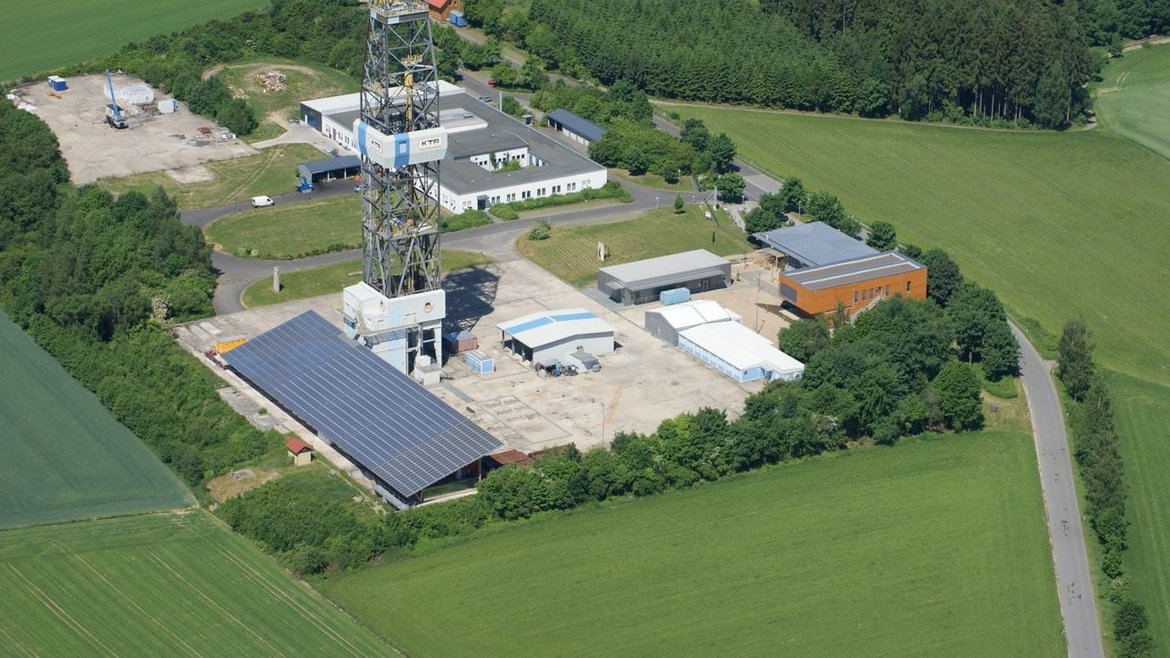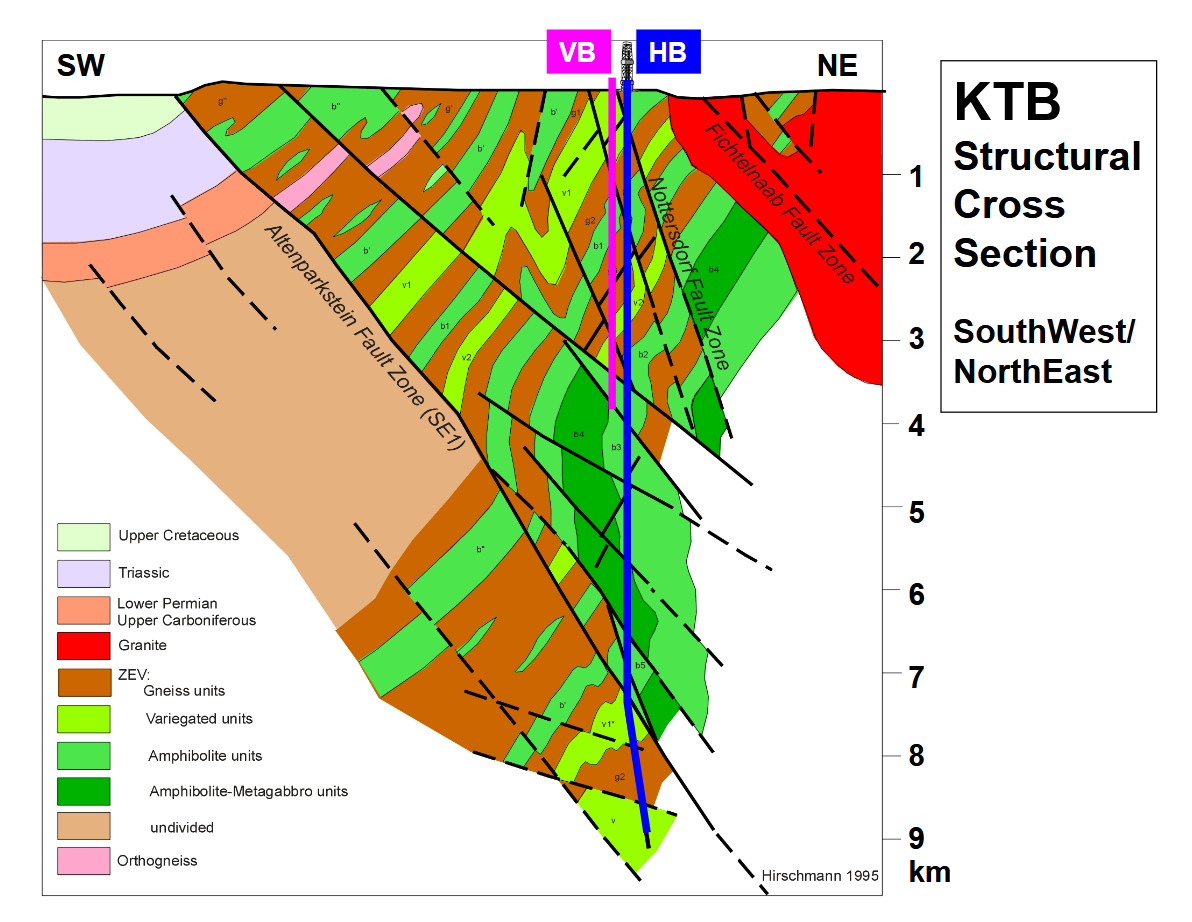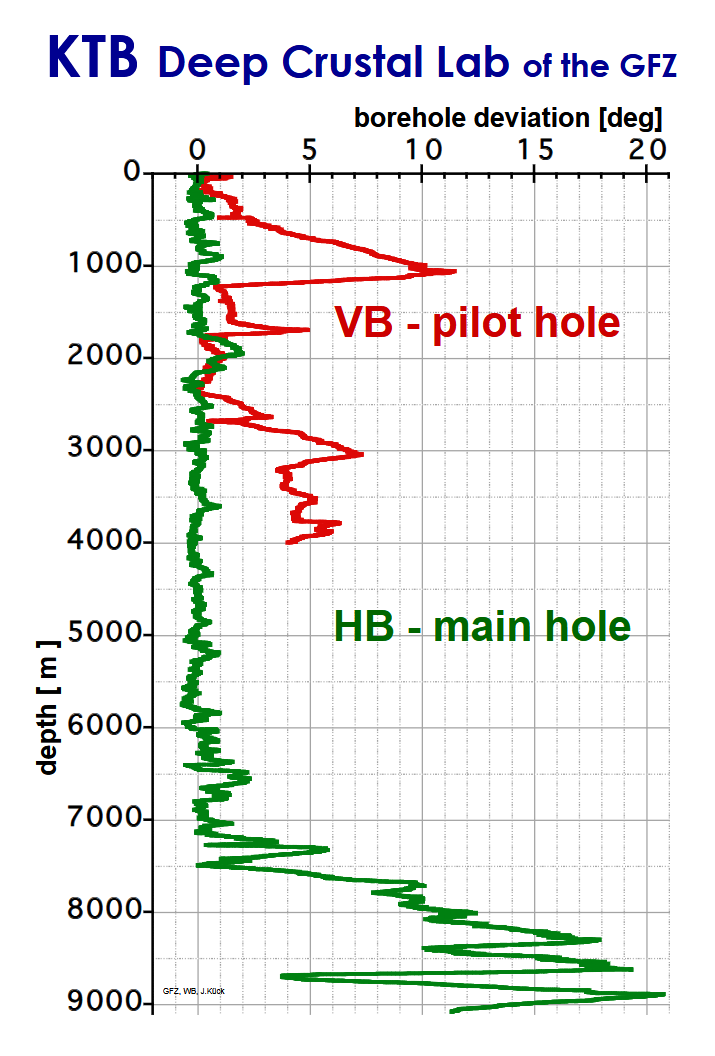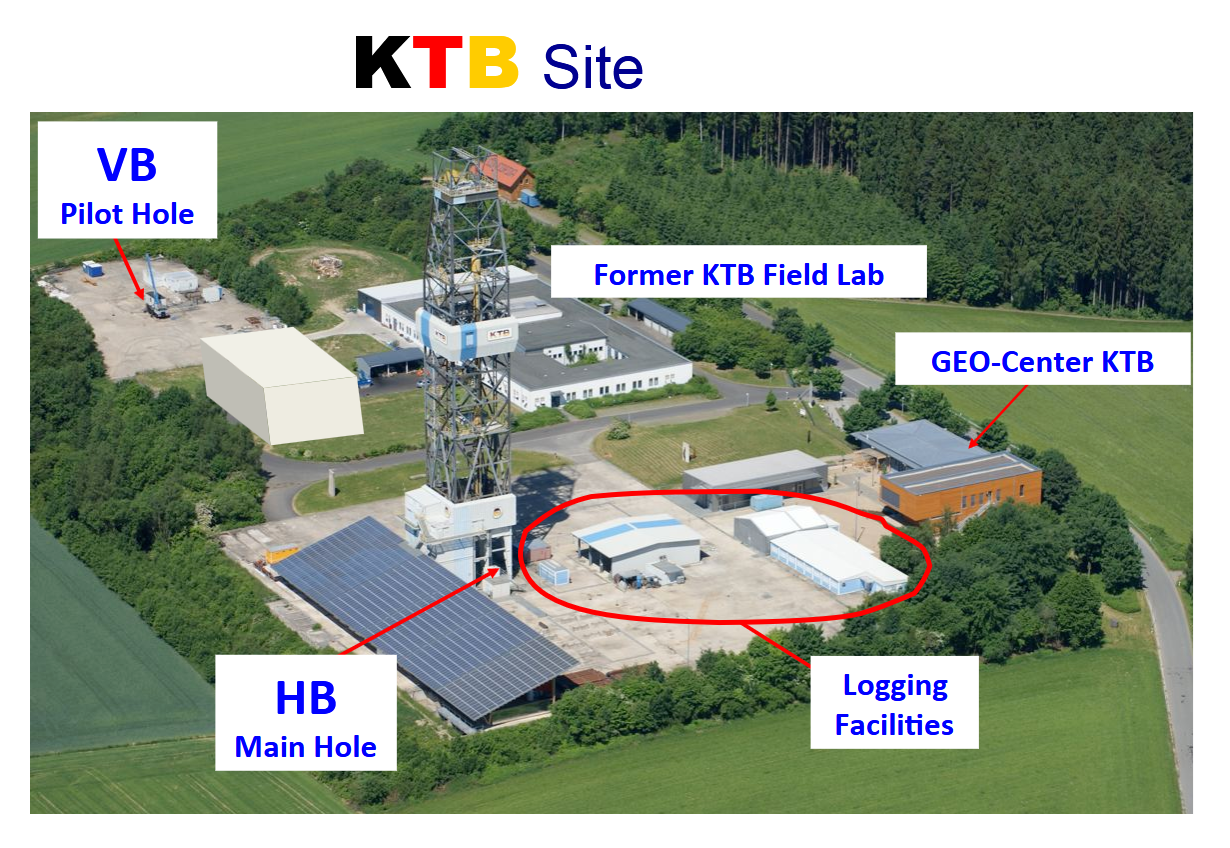The KTB Deep Crustal Lab
Contact:
Web:
Infrastructure belongs to:
During the KTB project (1987-1995) two deep boreholes were drilled, the so-called pilot hole (KTB-VB, 4 km) and the ultra deep main hole (KTB-HB, 9.1 km). Both wells are nearly completely cased. The VB is accessible to nearly bottom hole. At KTB is the unique constellation of two deep boreholes very close together at one site. The distance at surface between the two wells is only 200 m. (Figure 1) The KTB boreholes are situated in the crystalline metamorphic rocks of a Hercynian continental collision zone. The dominating rock types are paragneisses and metabasites. The rocks experienced at least two Palaeozoic metamorphic cycles and intense post-orogenic crustal stacking during upper Carboniferous and upper Cretaceous. (Figure 2) The boreholes are characterized by generally steeply dipping foliation, >60° and, below 5000 m, strong to extreme borehole wall breakouts. The KTB HB shows very low inclinations (< 2°) down to 7400 m, below the inclination reaches higher values as is in the entire VB (> 5°). (Figure 3) The platforms surrounding the two boreholes are completely paved and therefore accessible also with heavy trucks. (Figure 4)
Infrastructure and utilization Experiments and tests inside the unique KTB-DL boreholes can be performed under very favorable logistical conditions. Because there is no more rig time to be considered, even long-term experiments may be carried out at low costs.
Facilities needed for standard logging operations are provided by GFZ. The logging infrastructure comprises two logging winches, logging sondes, diverse cable heads & cross-overs, and a complete workshop specialized for logging sonde . The two available winches bear 7-conductor logging cables with length of 3600 m and 4500 m. The mechanical workshop can be used with the assistance of a GFZ logging engineer. The power supply is 240 V or 400 V/50 Hz (standard in Germany).




